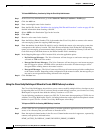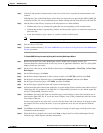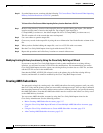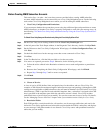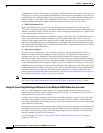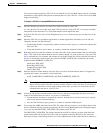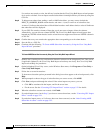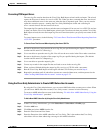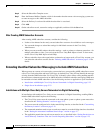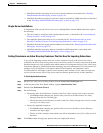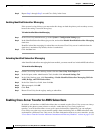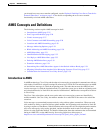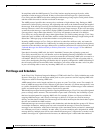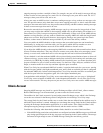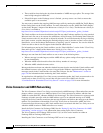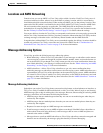
5-22
Networking Guide for Cisco Unity Release 5.x (With Microsoft Exchange)
OL-13844-01
Chapter 5 AMIS Networking
Procedures for Setting Up Cisco Unity to Use AMIS
Step 6 Select the Subscriber Template to use.
Step 7 Enter the Remote Mailbox Number, which is the number that the remote voice messaging system uses
to route messages to this AMIS subscriber.
Step 8 Select the Delivery Location with which the subscriber is associated.
Step 9 Click Add.
Step 10 On the subscriber record, customize settings as applicable, and then click the Save icon.
After Creating AMIS Subscriber Accounts
After creating AMIS subscriber accounts, consider the following:
• It takes a few minutes for the newly-created subscriber account to be available to receive messages.
• You can make changes to subscriber settings for individual accounts in the Cisco Unity
Administrator.
• When you want to modify unique subscriber settings—such as primary or alternate extensions—for
multiple subscribers at once, you can (re)run the Cisco
Unity Bulk Import wizard. To learn more,
see the Cisco
Unity Bulk Import wizard Help.
• When a subscriber leaves the organization or otherwise no longer needs a Cisco Unity account, you
can delete the subscriber account. See the
“Deleting AMIS Subscribers” section on page 5-34 for
details.
Extending Identified Subscriber Messaging to Include AMIS Subscribers
When a person on a remote voice messaging system who has a corresponding AMIS subscriber account
calls a Cisco
Unity subscriber and leaves a message, by default Cisco Unity will not identify the message
as being from the AMIS subscriber. For Cisco
Unity to identify callers whose calling number matches
the extension or alternate extension of an AMIS subscriber, identified subscriber messaging (ISM) must
be extended to include AMIS subscribers. See the following sections as applicable to your installation.
• Installations with Multiple Cisco Unity Servers Networked via Digital Networking, page 5-22
• Single-Server Installations, page 5-23
Installations with Multiple Cisco Unity Servers Networked via Digital Networking
In installations with multiple Cisco Unity servers networked via Digital Networking, enabling ISM to
include AMIS subscribers requires the following:
• The Cisco Unity servers must be connected to the same phone system or phone system network as
described in the
“Dialing Domains” section on page 2-15.
• The servers must be configured to be in the same dialing domain, as described in the “Customizing
the Primary Location” section on page 5-12.
• The automated attendant search scope on each server must be set to the dialing domain as described
in the
“Setting the Automated Attendant Search Scope” section on page 2-7.
• The applicable permissions on each server must be set, as described in the “Setting Permissions on
Active Directory Containers That Are Used for Importing Subscribers” section on page 5-23.



